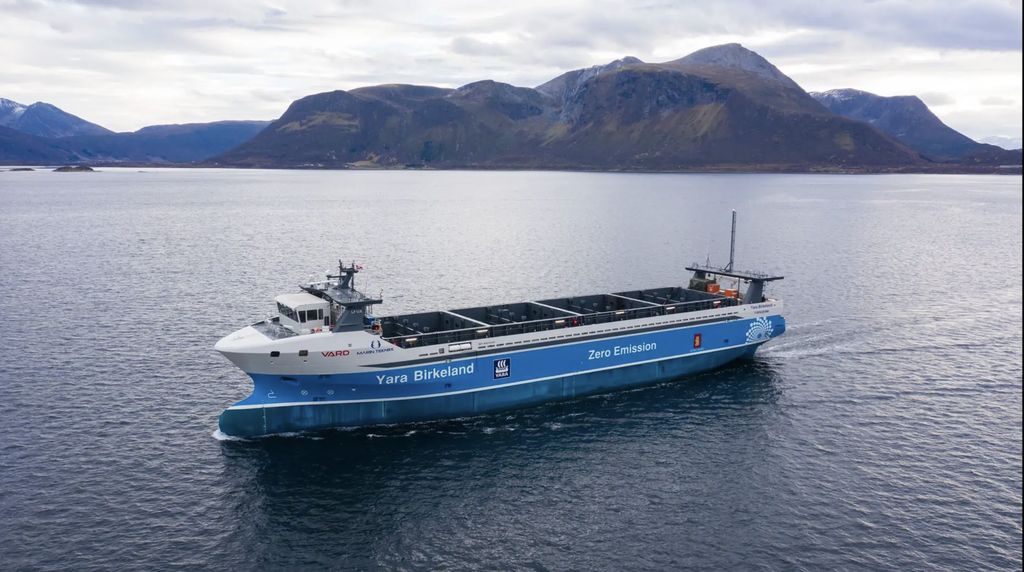Oslo, Norway —(Map)
Last Thursday, the world’s first self-driving, electric container ship made its first trip to Oslo, Norway. The ship’s owners aim to cut pollution by moving large amounts of products by water on the southern coast of Norway instead of by truck.
The ship, called Yara Birkeland, is owned by Yara, a company that makes fertilizer. The company wanted to develop a zero-emissions ship that was completely autonomous (self-driving). Yara worked with a ship-building company called Vard and the technology company Kongsberg to develop the ship. The company says that in the future everything, including loading and unloading the ship, will be handled completely automatically.

(Source: Yara.)
The Yara Birkeland is a container ship, capable of carrying 120 large containers like those pulled by trucks. But the ship is fully electric and is powered by batteries. The company says the ship has roughly as many batteries as 100 electric cars. The electricity that will be used to recharge the batteries is from renewable hydroelectric sources, so there’s no pollution at all.
On November 18, the boat traveled from Horten to Oslo, making its first trip ever. In Oslo, there was a special celebration. Norway’s prime minister, Jonas Gahr Støre came, and got a tour of the boat.

(Source: Yara.)
The Yara Birkeland won’t usually be going to Oslo, and it won’t be traveling far, either. It will travel a regular route from Yara’s factory in Porsgrunn up to the port in Brevik. By road, that’s a distance of about 8.7 miles (14 kilometers). Yara normally uses diesel-powered trucks to move fertilizer between these locations.
Now, with the Yara Birkeland moving huge amounts of fertilizer by water, the company expects to cut out 40,000 yearly trips by diesel-powered trucks. That will prevent about 2,204,620 pounds (1 million kilograms) of carbon emissions every year.

(Source: Yara.)
In the future, as an autonomous ship, the Yara Birkeland is expected to operate without any humans involved. Yara plans to spend the next two years training and testing the ship. But, as with many autonomous cars, the ship will continue to have humans watching out even once the ship is driving by itself.
The Yara Birkeland will have many challenges. It will be moving in a narrow inlet of water called a fjord. It will have to learn to handle the changing currents in the water. The ship will need to pass under two bridges and avoid all the other traffic on the busy fjord. Finally, it will have to dock at one of the busiest ports in Norway.

(Source: Knut Brevik Andersen, Wilhelmsen Ship Service, Yara.)
The company hopes to solve most of these problems in the next two years. Yara’s leader, Svein Tore Holsether, thinks that in three to five years, the ship might not even need to have controls that a human could use. But even in that situation, the company would still be keeping an eye on the ship from a base on land.
😕
This map has not been loaded because of your cookie choices. To view the content, you can accept 'Non-necessary' cookies.
